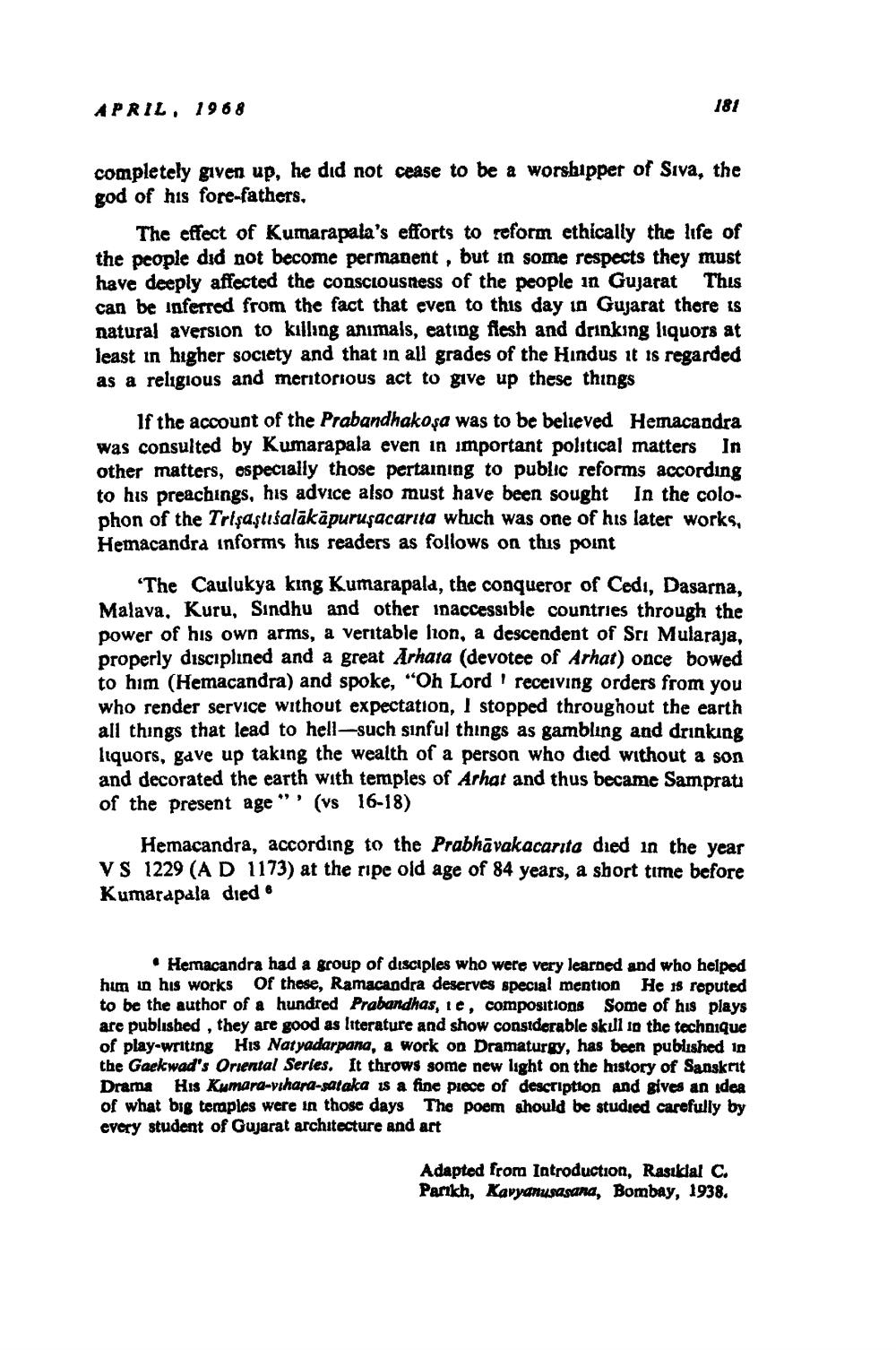________________
APRIL, 1968
181
completely given up, he did not cease to be a worshipper of Siva, the god of his fore-fathers,
The effect of Kumarapala's efforts to reform ethically the life of the people did not become permanent, but in some respects they must have deeply affected the CONSCIOUSness of the people in Gujarat This can be inferred from the fact that even to this day in Gujarat there is natural aversion to killing animals, eating fresh and drinking liquors at least in higher society and that in all grades of the Hindus it is regarded as a religious and meritorious act to give up these things
If the account of the Prabandhakosa was to be believed Hemacandra was consulted by Kumarapala even in important political matters in other matters, especially those pertaining to public reforms according to his preachings, his advice also must have been sought in the colophon of the Trişaşlısalākāpuruşacarita which was one of his later works, Hemacandra informs his readers as follows on this point
"The Caulukya king Kumarapala, the conqueror of Cedi, Dasarna, Malava. Kuru, Sindhu and other inaccessible countries through the power of his own arms, a veritable lion, a descendent of Sri Mularaja, properly disciplined and a great Arhata (devotee of Arhat) once bowed to him (Hemacandra) and spoke, “Oh Lord' receiving orders from you who render service without expectation, I stopped throughout the earth all things that lead to hell-such sinful things as gambling and drinking liquors, gave up taking the wealth of a person who died without a son and decorated the earth with temples of Arhat and thus became Samprata of the present age "' (vs 16-18)
Hemacandra, according to the Prabhāvakacarita died in the year VS 1229 (AD 1173) at the ripe old age of 84 years, a short time before Kumarapala died
• Hemacandra had a group of disciples who were very learned and who helped him in his works of these, Ramacandra deserves special mention He 18 roputed to be the author of a hundred Prabandhas, ie, compositions Some of his plays are published, they are good as literature and show considerable skull in the technique of play-writing His Natyadarpana, a work on Dramaturgy, has been published in the Gaekwad's Oriental Series. It throws some new light on the history of Sanskrit Drama His Kumara-vihara-sataka is a fine piece of description and gives an idea of what big temples were in those days The poem should be studied carefully by every student of Gujarat architecture and art
Adapted from Introduction, Rasiklal C. Parikh, Kavyanusasana, Bombay, 1938.




